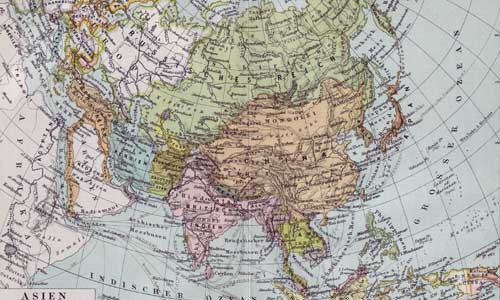In my previous article, I discussed Geopolitics in the light of Mahan’s Sea Power Theory. However, in Geopolitics, Heartland and Rimland theories are also of great significance. And, with the revival of geopolitics, these theories become more significant in comprehending relations among states.
Sir Halford John Mackinder, a British geographer, gave the famous Heartland Theory in his paper: The Geographical Pivot of History. His theory stated that “in the industrial age, the natural resources of Central Asia—‘the great pivot’—are so vast that it will serve as the geostrategic instrument for the state that controls it to become ‘the empire of the world’.”
Mackinder’s theory suggested that the control of ‘the great pivot’ or Heartland - Eurasia - was significant in controlling the world. The main postulates of his theory included the following:
Who rules Eastern Europe commands the Heartland
Who rules the Heartland commands the World Island
Who rules the World Island commands the world
Today, the Heartland consists of Russia and the former Soviet Republics of Central Asia (Kazakhstan, Kyrgyzstan, Tajikistan, Turkmenistan, and Uzbekistan), which is becoming an integral part of the connection routes between South Asia and Eastern and Mainland Europe. The area was under the Soviet control because of the same reason that it was vital to maintain a control of the Heartland. The Great Game between the Great Britain and Soviet Union in the 19th and 20th centuries was inspired by the Mackinder’s theory as both the powers made efforts to dominate the area.
After the dissolution of Soviet Union in 1991, the Central Asian states have become independent states. These new republics now form the modern core of the pivot area of Mackinder’s thesis, and gaining significance in any geo-strategic analysis as the Heartland. Though Russia has always been dominant in the Heartland, it’s influence is being challenged by the United States.
Since the independence of Central Asian countries, the US has been making efforts for achieving some sort of control over the region through backing of the liberal democracy.
On the other hand, China is also making efforts to have an increased role in the region; particularly, in the light of its Belt and Road Initiative and the Central Asian Economic Corridor. China considers the region pivotal in connecting its trade routes with the Eastern and Mainland Europe and even Middle East. Therefore, China’s energy and infrastructure projects with the Central Asian states are the moves to dominate Mackinder’s Heartland.
Meanwhile, Nicholas John Spykman, the founder of the Yale Institute of International Studies, is best-known for his geopolitical concept of Rimland. Countering and to certain aspects adding to Mackinder’s concept of Heartland, Spykman argued: ‘Who controls the Rimland (the coastal areas or littorals of Eurasia) rules Eurasia; and who rules Eurasia controls the destinies of the world’.
Spykman’s concept elaborated that the landlocked states faced security challenges from their immediate neighbors. Island states mostly had to face pressure from other naval powers; however, if such Islands were offshore states, like Great Britain and Japan, they could most likely face security challenges from other coastal powers. Therefore, to counter such challenges, offshore island states strived to conquer or colonize coastal areas, so as to maintain coastal buffer states and support a balance of power between continental powers. Thus, both land and sea frontiers determined their principal security strategy.
Spykman’s theory is the most pertinent of the geopolitical theories mentioned above; particularly, in the light of rise of China and its endeavors to control the Rimland, while the efforts of other countries to stop China from doing so. China’s Belt and Road Initiative is an effort to dominate both the sea coasts and the land. China’s growing influence in South China Sea, and Indian Ocean are significant to consider in this regard. China has increased its presence in South China Sea and it is striving to make an impact in the Indian Ocean through China Pakistan Economic Corridor (CPEC). CPEC can ensure Chinese trade through Pakistan’s Gwadar Port with the Middle East and African countries, with much lesser costs that the routes through South China Sea, thus, giving China an alternative in its Rimland dominance. So as to counter the same, the US has been strengthening its military presence around the Indian Ocean chokepoints so as to keep a check on Chinese dominance. It has also formed close relations with India for the same purpose and keeping the balance of power in the South China Sea not to let the Rimland fall to the absolute Chinese control. In the light of above discussion, it can be said that Spykman’s Rimland theory is still of major significance in the international relations, both for its practitioners and its analysts.
Home » Opinion » ‘Heartland’ and ‘Rimland’ in Geopolitics
‘Heartland’ and ‘Rimland’ in Geopolitics
|

